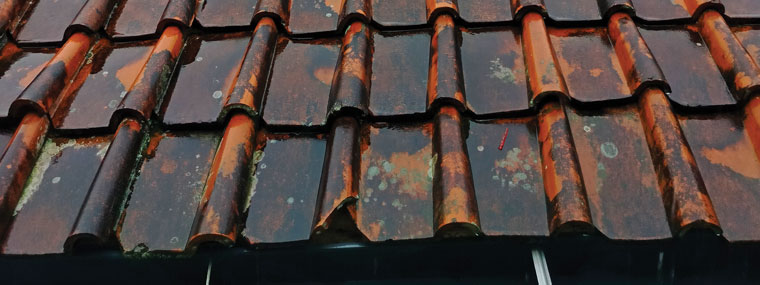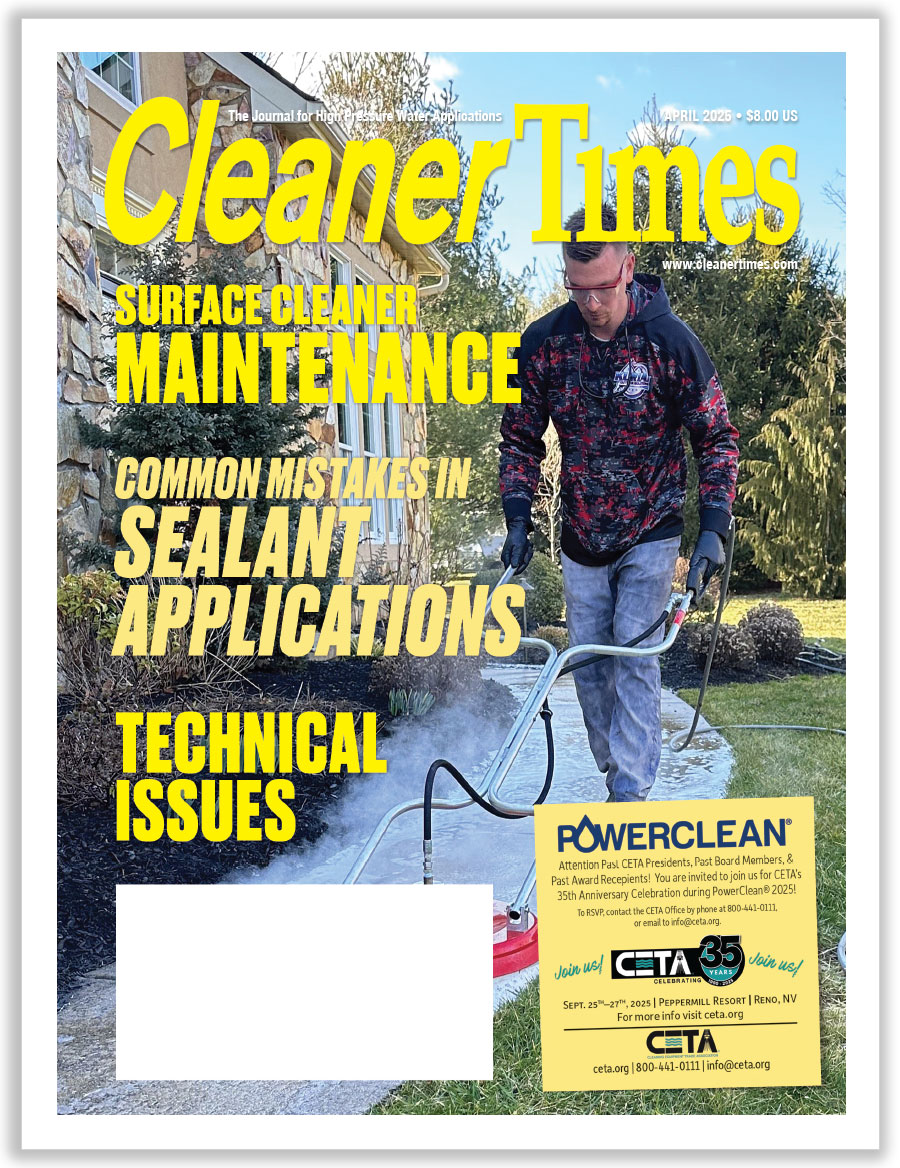
Why Consider Adding Soft Washing
By Diane M. Calabrese / Published March 2023

The customer is always right. Okay, that may be a stretch.
Yet the customer has strong preferences, and the ability to meet customer choices must be part of the repertoire to the fullest extent possible.
“Consumers are hearing and learning more about soft washing and its benefits from friends, social media, and online outlets,” says Linda Chambers, brand and sales manager at GCE/Soap Warehouse Brand in Norcross, GA. That’s spurring interest.
“It is the customers themselves making the demand on contractors to have and offer soft washing or not get the work,” explains Chambers. That’s a very persuasive step by customers.
“Making soft washing a part of the services you offer your customer is pivotal, not only for your bottom line, but also in giving the customer the best all-around care that you can give,” says Chaz Ferrell, supervisor trainee at Powerwash.com in Fort Worth, TX. Doing the best possible for the customer is a contractor’s overarching goal.
Soft washing requests may have gotten a boost from the wants of clients, but the process brings benefits.
“Not only is soft washing an effective way to wash, but it will keep your crew safe as well,” says Ferrell. “Say you are new to pressure washing and are only offering flat washing; soft washing is a great next step to take your business to the next level.”
The list of positive outcomes attached to soft washing should get the attention of any contractor that’s still weighing the possibility. Ferrell cites several of them, beginning with enhanced safety on the job site.
Also on the list are putting a definite end to organic growth and often being able to remove stains that pressure washing cannot, explains Ferrell. He adds that delicate surfaces tolerate soft washing much better than pressure washing.
Any time less pressure is used, working conditions become safer. Soft washing uses low pressure in the range of 150 psi with the correct chemical to clean a surface. A pressure washer might use 8 or 10 times that pressure to clean.
While soft washing is unlikely to be a match for concrete, it is an excellent fit for substrates like roofs that are relatively pliable. [Review the basics of soft washing—a method, and its contrast with pressure washing—in the April 2022 article in these pages (https://www.cleanertimes.com/magazine/cleaner-times-articles-2/pressure-washing-and-soft-washing-valuable-tools-and-a-place-for-each).]
Many Interested Parties
While much of the inspiration to add soft washing may come from customers, there are other forces pushing contractors in its direction. “Many shingle manufacturers now require soft washing to maintain the warranty,” says Pete Gustin, Comet/HPP product manager at Valley Industries in Paynesville, MN.
It’s not just shingle manufacturers aiming to ensure the longevity of, and no complaints about, their products. Manufacturers of products designed to extend the lifespan of a roof have expectations that will lead to more requests.
“Soft washing is required prior to treatment with many new roof rejuvenators,” says Gustin. “The rejuvenators are growing in popularity because they are an inexpensive alternative to complete roof replacements.”
It’s relatively easy to begin soft washing. “Most painters, roofers, pest control, lawncare, and power washing professionals already have the equipment, vehicles, trailers, and experience to easily add soft wash to their list of services,” says Gustin.
If power washing contractors do not add it, others in parallel sectors will. Adding soft washing now will ensure the niche does not get filled by someone else.
Regardless of what their project is, power washing contractors in 2023 are committed to doing the most with the least amount of impact on the environment. (Actually, contractors in our industry have been on this trajectory for a long time, but now new tools and methods make the objective easier to achieve.)
Gustin gives us an example. “Soft washing gives you more control over the amount of water that is used by using a surfactant to allow the chemical to sit in place and do its job once applied.”
Moreover, Gustin observes that chemical use is also minimized. “Soft wash uses a very low amount of bleach, which is one of the most effective cleaning elements known.”
Over time, the benefits of soft washing are cumulative. Less water used translates to an immediate drop in water consumption. Because the effectiveness of a soft wash lengthens the intervals between cleaning, there is a cumulative gain in water conserved.
Energy stands right alongside water when conservation is the goal. The use of lower pressure and longer intervals between cleaning reduces the demands on power. Less power required over time means less fuel used over time and fewer emissions over time.
Gustin says that in some ways the outcome with soft washing is like “pest control” in that organisms on a surface—algae, moss, etc.—are being killed. “Water alone may temporarily clean a surface, but it does not kill the organism,” he explains.
(Spores do survive, of course, to blow in the wind or be carried on the claws of birds or feet of rodents. Surfaces will be recolonized and require more cleaning eventually.)
Evidence for changes in climate takes many forms. One bit is the increasing prevalence of lichens or the decreasing presence of lichens. It depends on the region. (Documentation of the correlation of lichens with climate is ongoing.)
Lichens are symbionts. In other words, what we label a lichen is actually a close and mutually beneficial association between an alga and a fungus. Rock outcrops on north-facing slopes in forests are the surest places to find lichens, which play a significant role in breaking rock down over time.
But lichens can be found on tree bark and on houses and roofs. Whether it is the increase in warmth or the increase in nitrogen or something else, more lichens seem to be growing on residential and commercial surfaces.
More lichen growth means more calls for removal. And soft washing is a good method to use.
Back to just the economics of soft washing, though, there’s the size of the market. “Currently 80 percent of the territory east of the Mississippi River is considered soft wash territory, and that continues to grow,” says Gustin.
Future Interest
No interested group has domain over what the next impetus will be for a change in methods and/or tools in an industry. Ideas come from those using the tool, those making the tools, regulators, and those who are served by the tools.
Dramatic changes are taking place in the types of materials used to clad the exterior of buildings. Design
engineers want to minimize heat loss in winter, maximize heat release in summer, and so on.
Consider roofs. The U.S. Department of Energy has a keen interest in what are labeled “cool roofs,” or those that reflect more sunlight. According to DOE, a conventional roof can reach a temperature of 150ºF on a sunny afternoon. A cool roof cuts the high to 100ºF.
The DOE is working with manufacturers to encourage changes in roofing materials. We have all read about homeowners painting their roofs white or a light color to achieve some coolness. That’s not a plan because it will void most warranties.
Building-it-in from inception is now the focus of moving dwellings to cooler—energy conserving—roofs. The changes in materials require a corresponding change in how cleaning is approached.
For instance, the spray polyurethane foam roofs must be augmented with a protective coating because they are susceptible to damage from moisture, mechanical stress, and ultraviolet rays. Yes, they are excellent in terms of being highly reflective. But even a soft wash approach to cleaning must be done with care so as not to damage the roof.
Cool roofs are being encouraged in new residential construction, particularly in the hottest parts of the country. Getting immersed in soft washing now prepares a contractor for a market that will only increase.
Recommendations about how to clean photovoltaic films on solar panels vary with the manufacturer (and the exact composition of the film). At the gentlest end of the spectrum, it’s manual cleaning with a sponge and soapy water, but some manufacturers allow soft washing.
Down the road, it’s possible some contractors may even find themselves asked to clean a lime washed (“whitewashed”) structure. As government entities look for ways to reduce energy consumption, old methods of doing things have gotten a second look.
The National Park Service (NPS) National Center for Preservation Technology and Training (NCPTT) sees value in limewashed structures. Limewash, according to the NPS-NCPTT, acts as a fire retardant, antiseptic, and antifungal.
The many substances that have been used to hold calcium hydroxide—hydrated calcium oxide from burnt limestone or other processes—together include casein (milk solids), tallow, pine rosin, and even molasses. The NPS is using limewash to coat the lower parts of tree trunks, though not buildings yet.
With renewables being embraced, it’s not improbable tallow or molasses could make their way into coatings for exteriors and roofs. Soft washing in the context of the renewables to come may represent the leading edge of a wave.





